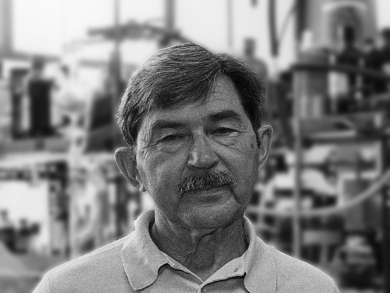Henry Taube, eminent coordination chemist, was born on November 30, 1915, in Neudorf, Saskatchewan, Canada. He studied chemistry at the University of Saskatchewan, where he received his bachelor’s degree in 1935 and his master’s in 1937. During his time there, he worked with Gerhard Herzberg, who went on to win the Nobel Prize in Chemistry in 1971. Taube received his Ph.D. from the University of California, Berkeley, USA, under the supervision of William C. Bray in 1940. His thesis focused on redox reactions of ozone and hydrogen peroxide in solution.
In 1941, Henry Taube joined Cornell University, Ithaca, NY, USA, as Assistant Professor of Chemistry, where he continued to work on the detailed mechanism of redox reactions. He moved to the University of Chicago, IL, USA, in 1946. There, he started to use isotopic tracers to study reaction mechanisms, and also began to work on the topic of coordination compounds, especially ligand exchange at transition metals. During his time in Chicago, he was promoted to Associate Professor and later Full Professor.
During the early 1950s, Professor Taube and his team made seminal contributions to the understanding of electron exchange and ligand exchange in transition metal complexes. The researchers found a correlation between the rates of ligand substitution reactions and the d-electron configuration of the metal center. Based on his breakthrough insights into inorganic reaction mechanisms, he received the unshared Nobel Prize in Chemistry in 1983 “for his work on the mechanisms of electron transfer reactions, especially in metal complexes”. Together with his Ph.D. student Carol Creutz, Taube is the namesake of the transition-metal complex [Ru(NH3)5]2(C4H4N2)5+, the Creutz-Taube complex. It was instrumental in understanding electron transfer in metal complexes.
In 1962, Henry Taube became full Professor at Stanford University, CA, USA, where he remained until his retirement in 1986. In addition to the Nobel Prize, Henry Taube received numerous honors, including the US National Medal of Science in 1977, the Robert A. Welch Foundation Award in Chemistry in 1983, the Priestley Medal by the American Chemical Society (ACS) in 1985, and several honorary doctorates.
Henry Taube is the answer to Guess the Chemist (47).
References
- Henry Taube – Nobel Biographical,
in Les Prix Nobel. The Nobel Prizes 1983, Wilhelm Odelberg (ed.), Nobel Foundation, Stockholm, 1984. - Electron Transfer Reactions: Inorganic, Organometallic, and Biological Applications,
Stephan S. Isied (ed.),
American Chemical Society, Washington, DC, USA, 1997.
DOI: 10.1021/ba-1997-0253
Selected Publications by Henry Taube
- Binuclear complexes of ruthenium ammines,
Carol. Creutz, H. Taube,
J. Am. Chem. Soc. 1973, 95, 1086–1094.
DOI: 10.1021/ja00785a016 - Direct approach to measuring the Franck-Condon barrier to electron transfer between metal ions,
Carol Creutz, Henry Taube,
J. Am. Chem. Soc. 1969, 91, 3988–3989.
DOI: 10.1021/ja01042a072 - Synthesis and properties of pentaamminepyridineruthenium(II) and related pentaammineruthenium complexes of aromatic nitrogen heterocycles,
Peter C. Ford, DeForest P. Rudd, R. Gaunder, Henry. Taube,
J. Am. Chem. Soc. 1968, 90, 1187–1194.
DOI: 10.1021/ja01007a015 - Evidence for a Bridged Activated Complex for Electron Transfer Reactions,
Henry Taube, Howard Myers,
J. Am. Chem. Soc. 1954, 76, 2103–2111.
DOI: 10.1021/ja01637a020 - Observations on the Mechanism of Electron Transfer in Solution,
Henry Taube, Howard Myers, Ronald L. Rich,
J. Am. Chem. Soc. 1953, 75, 4118–4119.
DOI: 10.1021/ja01112a546 - Rates and Mechanisms of Substitution in Inorganic Complexes in Solution,
Henry Taube,
Chem. Rev. 1952, 50, 69–126.
DOI: 10.1021/cr60155a003



